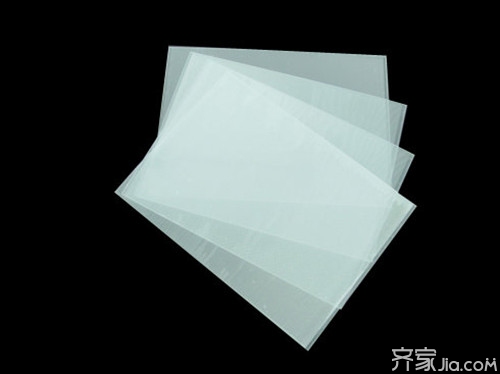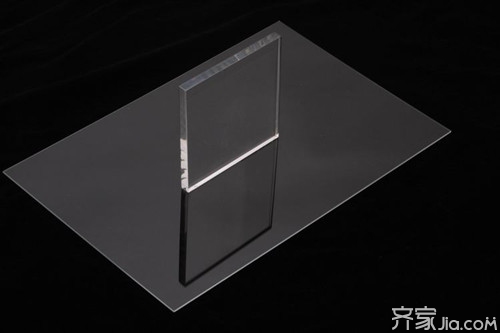
Privacy statement: Your privacy is very important to Us. Our company promises not to disclose your personal information to any external company with out your explicit permission.

At this stage of lighting, the most popular LED lighting series, LED panel lights have an important part called light guide plate, in the development of LED panel light, light guide plate is becoming more and more essential The accessories, their status and role are also increasing. Here we take a look at what is special about the light guide plate.

Light guide plate features
1, can be arbitrarily cut into the required size, can also be used to splicing, the process is simple, easy to make;
2, high light conversion rate (more than 30% higher than the traditional board), light uniformity, long life, indoor normal use more than 8 years, safe and environmentally friendly, durable and reliable both inside and outside the home can be applied;
3, the same area light intensity, luminous efficiency, low power consumption;
4, can be made into special-shaped, such as round, oval, arc, triangle, etc.;
5. With the same brightness, thinner products can be used to save costs;
6, can use any light source, dot line light source to do surface light source conversion, the light source includes LEDCCFL (cold cathode lamp), fluorescent tubes and so on.

Light guide plate classification
1. The light guide plate is divided into a cutting forming mode and an injection molding mode. Cutting forming: The optical PMMA original plate is subjected to a cutting process to complete the finished product. Injection molding: The injection molding machine uses an injection molding machine to apply the high-temperature, high-pressure PMMA pellets into the mold to cool and form the product.
2. The light guide plate is divided into direct light type and side light type (light tube and LED) according to light entering mode. Direct type: place the light body (light tube or LED) under the light guide plate. Side-into-light type: Put the light body (light tube or LED) on the side of the light guide plate.
3, light guide plate according to production methods are divided into: non-printing and printing. Non-printing type: The dots are directly formed on the reflective surface when the light guide plate is formed. It is divided into Etching, V-cut, Stamper, and Internal Diffusion. Printing type: After the light guide plate finishes the shape processing, the dots are printed on the reflective surface by printing, and are divided into IR and UV.
4. The light guide plate is divided into non-printing type and printing type according to the dot making method. Non-printing type: The dots are directly formed on the reflective surface when the light guide plate is formed. It is divided into Etching, V-cut, Stamper, and Internal Diffusion. Printing type: After the light guide plate finishes the shape processing, the dots are printed on the reflective surface by printing, and are divided into IR and UV.

How light guides work
1. Principle of astigmatism in light guide plates
The light guide plate is made by press-forming the propylene into a smooth surface plate, and then using a highly reflective and non-absorbing material on the acrylic plate, printing a circular or square diffusion spot on the bottom surface of the plate with screen printing. In order to spread the light. When the light hits the diffusion point, the light will be reflected in all directions, and then the reflection conditions will be emitted from the front of the light guide plate. In order to make uniform light emission, it is necessary to use a variety of dense and different diffusion points (differences in density and size to ensure that the probability of light reflection in all directions is approximately the same). The purpose of the reflector plate in the light guide plate is to reflect the light exposed at the bottom surface back into the light guide plate, thereby improving the light utilization rate and increasing the brightness. Although various manufacturing processes of light guide plates are different at present, the principles of light reflection and light scattering are all utilized.
2, the principle of light guide plate design
The design principle of the currently widely used light guide plate stems from the notebook LCD screen we see everyday. It uses the principle of spectral analysis combined with laser engraving or digital printing technology and is produced under constant temperature, constant humidity, and dust-free environmental conditions. It has the characteristics of ultra-thin and ultra-bright, uniform light guide, energy-saving and environmental protection, no dark areas, simple and quick installation and maintenance. At present, the maximum width of the light guide plate is up to 1500 mm, the length up to 3000 mm, and the thinnest thickness is 2 mm. The larger the size, the greater the thickness in order to ensure brightness, and the correspondingly poorer light guide effect. The thickest light guide plate does not exceed 20 mm.
Summary: The above is the characteristics of the light guide plate introduced by Xiao Bian and the classification of the light guide plate. We hope that we can help you effectively. For more information, please pay attention to this site.
Op LED t8 Tube LED Fluorescent Accessories Fluorescent Lamps Lamps Lamps
Mail a questo fornitore

Privacy statement: Your privacy is very important to Us. Our company promises not to disclose your personal information to any external company with out your explicit permission.

Fill in more information so that we can get in touch with you faster
Privacy statement: Your privacy is very important to Us. Our company promises not to disclose your personal information to any external company with out your explicit permission.